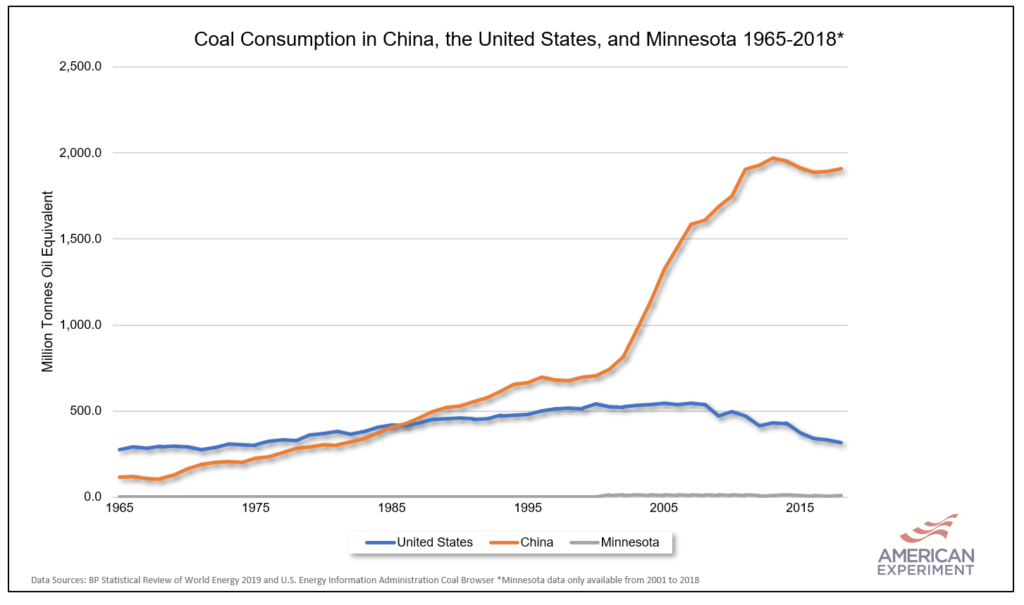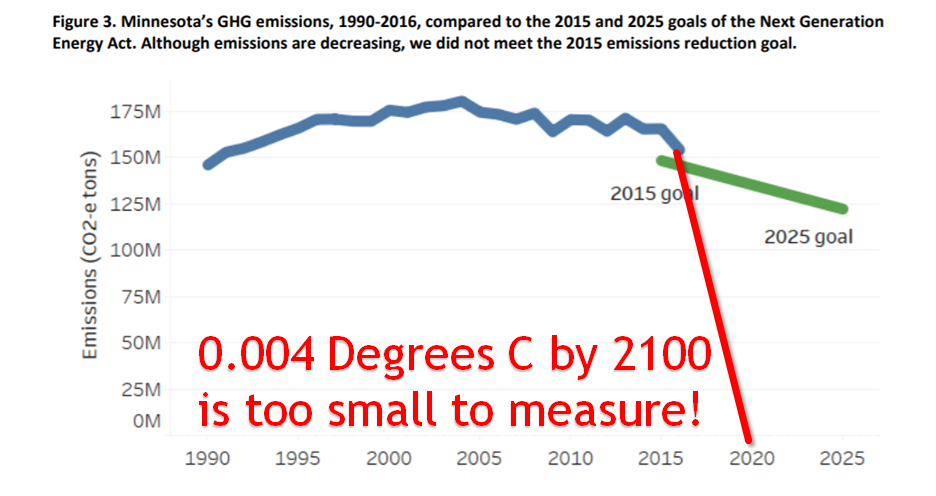Minnesota Considers Green New Permitting Process
The state of Minnesota is currently conducting a “sweeping” rewriting of its permitting rules to force state agencies like the Minnesota Pollution Control Agency to consider the greenhouse gas impact of proposed projects during the environmental review phase of building permits, according to the Star Tribune.
According to the Minnesota Environmental Quality Board’s (EQB) draft recommendations, the agency will start taking public input in February and end it in March. These are massive changes with very little time for public comment. The main problem with these regulations is that despite the EQBs desire for them to be transparent and easy to follow, they will end up being difficult and yet another avenue for politicizing our permitting process.
Impossible to Calculate:
The Minnesota Environmental Quality Board (EQB) wants to establish an easy way to quantify emissions. The goal of the report is to:
“Support Responsible Governmental Units (RGU) in the quantification of their GHG emissions in tons of carbon dioxide equivalent for all mandatory categories, the EQB should develop and disseminate guidance and tools, including a consistent and simple calculation method.
“All EAWs should provide a narrative discussion of the project’s climate adaptation and emission mitigation opportunities.”
“Additional stakeholder engagement should take place before any recommendations are implemented.”
All of this sounds good on the surface, but this bureaucratic happy talk quickly melts when you try to implement these programs.
How exactly do you calculate the greenhouse gasses emitted at projects?
In the case of a dairy farm, do you simply estimate how much methane the cows will emit? How much is too much? Is there a limit? What is the reason for the limit? What is the enforcement mechanism? Will someone from MPCA audit the farm to make sure they don’t have “too many” cattle at the facility?
What if the milk or cheese is sold out of state? Do you assume all of those emissions are attributable to Minnesota, or should the emissions be prorated to out-of-state users? Do you consider the emissions of farms in other states that may ship products to Minnesota? These are thorny questions that will be difficult, if not impossible, to resolve using a simple calculator.
Politicizing the Permitting Process
The most likely outcome from adding these criteria to the environmental review phase of building permits is that the process will become a lot more political, even though lawmakers will say they are “following the science.”
What begins as a non-binding greenhouse gas accounting will almost certainly transform into a reason to approve or deny projects in the future. How this manifests itself is unknown at this time, but it could take the form of a cap-and-trade system for Minnesota counties, similar to the system run in California, or a statewide carbon tax, like the ones proposed in Oregon.
It could also boil down to giving a board of unelected bureaucrats the defacto power to centrally plan our entire economy by allowing them to use greenhouse gasses as the deciding criteria for deciding whether to allow a project to move forward.
If you don’t think this will be abused for political purposes in Minnesota, you haven’t been paying attention. Here’s how it will work: The data will be so inconclusive that politicians and bureaucrats will be able to do whatever they wanted to do anyway.
Does your project support the goals or positions of the party in power? If yes, they’ll likely find a way to justify approving the permit, even if that means ignoring scientific evidence that may not justify approving the permit.
Is your project on the list of projects that Governor Walz doesn’t like? Then you’ll likely need to jump through far more hoops, or your project may be denied entirely, even if one could make a reasonable argument that the project will reduce the impact of climate change on Minnesota.
This is already happening in Washington State, where state agencies denied the permit for a liquefied natural gas (LNG) terminal based on the terminal’s emissions. However, they did not hold Boeing to the same standard when they wanted to build a factory.
The irony of this situation is that LNG can reduce emissions in China and Japan by allowing them to burn natural gas instead of coal, which would cut carbon dioxide emissions in half. On the other hand, Boeing manufactures airplanes, which emit a healthy amount of carbon dioxide. I’m sure new airplanes are more fuel-efficient than old ones, but the double standard here reeks of politics, and it does not reflect an impartial weighing of the evidence.
What Will This Accomplish?
Minnesota politicians don’t seem to understand that there is no Climate Heaven for our state. Even if we were to cut our carbon dioxide emissions down to zero, we would still be impacted by the actions of other countries, particularly communist China. The BP statistical review of energy shows that China’s coal consumption dwarfs that of Minnesota, meaning any emissions reductions we achieve will be wiped out by rising emissions abroad.

Even if Minnesota were to slash its emissions to zero, it would only reduce future global temperatures by 0.0004 degrees C, or 0.00072 F by 2100, an amount that is so small it is impossible to measure with the most sophisticated scientific equipment.

Zeroing out our emissions will have zero impact on future global temperatures, but research from Harvard shows building a fleet of wind turbines will have a massive warming impact on surface temperatures in Minnesota. Wind turbines cause large, localized warming because they mix warm air from the upper atmosphere with cool air from the lower atmosphere, which could warm our state by 0.54 degrees C by 2100.

This means wind turbines will cause 138 times more warming in Minnesota than getting rid of every man-made molecule of CO2 in the state. Will the EQB factor this into their decision-making with their new climate change environmental reviews? Something tells me the answer is no.

Conclusion
Our lawmakers need to make noise about this issue now because it may be too late if they don’t. This is a much bigger deal than the California car mandates because this could eventually affect every single project in the state. It could mean no new roads, lots more light rail, and make it virtually impossible to permit new factories or farms in our state.